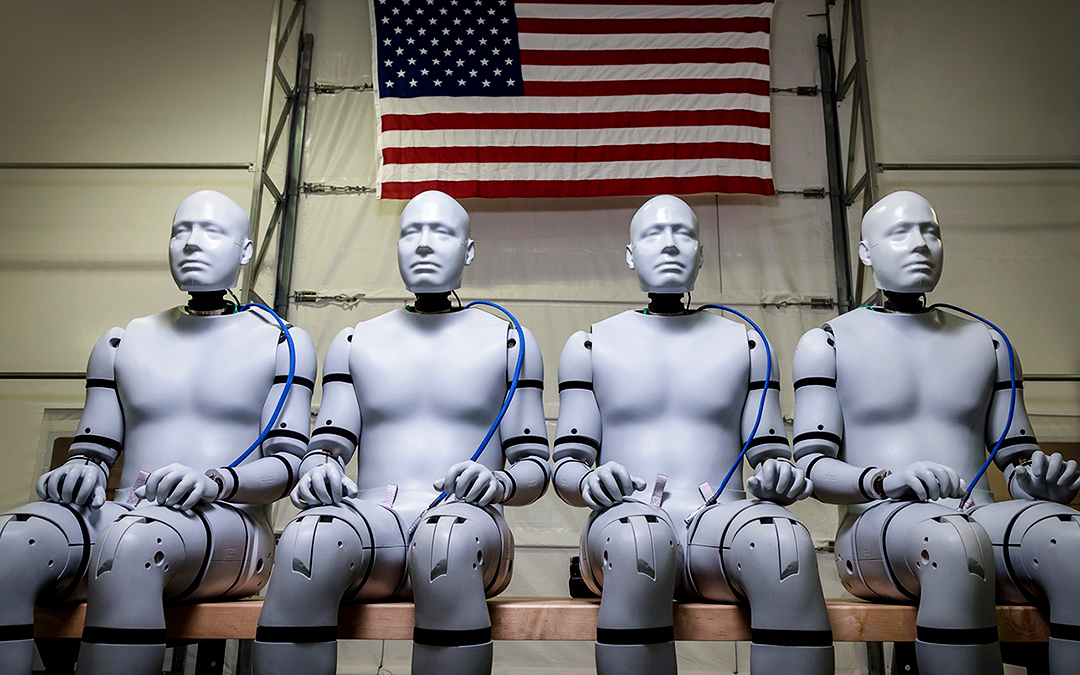In Iraq and Afghanistan underbody blasts from improvised explosive were the largest cause of injury for U.S. troops. In order to help make troops safer, the U.S. Army first needed a highly specialized test dummy that would allow them to gather the right data in a blast test.
That specialized blast test dummy is now a reality and is known as WIAMan, or Warrior Injury Assessment Manikin. WIAMan is specifically designed for military use in underbody blast testing of vehicles to validate vehicle design and safety features engineered to protect warfighters. As stated in a recent news post on soldiersystems.net1:
“WIAMan represents the most human-like surrogate yet to provide insight on improving military ground vehicle systems and identify protection mechanisms that reduce the likelihood and severity of warfighter injuries.”
Developed in partnership with the U.S. Army, DTS, and top universities, who were responsible for extensive injury biomechanics research, the WIAMan blast manikin measures vertical loads. A blast impact comes from below the occupant. Automotive crash test dummies are designed to measure only frontal or side impacts, which is why development of WIAMan was critical. DTS was the prime contractor and built both the manikin and the SLICE6 data acquisition system and then integrating them.2
This large volume of data is processed by analytical experts from DEVCOM (U.S. Army Combat Capabilities Development Command) “to provide reliable injury assessment and analysis.”1
The WIAMan software analysis tool used is called AMANDA, or the Analysis of Manikin Data. And on Feb. 2, 2022, AMANDA received a final stamp of trust in quality and accuracy when it was accredited by the U.S. Army Test and Evaluation Command for use in live fire test and evaluation.
“The WIAMan data acquisition system takes samples from an event at a rate of approximately 200,000 samples a second, and the typical event takes a couple seconds, so we’re talking around 400,000 data samples — an incredible amount of data,” said Jacob Ehlenberger, AMANDA software developer. “When you load that into AMANDA, all subject matter experts have to worry about is looking at the results. AMANDA automates the entire process, bringing complex analysis to the hands of experts so they can focus on their domain of excellence.” 1
AMANDA also integrates filtering methodology, developed by Aaron Alai, a DAC signal processing scientist, to ensure sensor data does not reflect extraneous noise that could lead to incorrect injury prediction.1
The data produced by WIAMan, once analyzed, helps the Army to more accurately measure soldier risk and evaluate trade-offs in vehicle design. Ultimately this means reducing the likelihood and severity of warfighter injuries.
“Simply put, insight from AMANDA saves lives.”1
Resources
- https://soldiersystems.net/2022/05/17/army-injury-assessment-tool-receives-stamp-of-accreditation/
- https://www.aerodefensetech.com/component/content/article/adt/features/articles/27963
Related Articles
DTS Application Spotlight: Satellite Transportation Monitoring
How the TSR AIR data logger is helping ensure the safe transit of high-value assets.
DTS Innovation Room 2024
Join us at the DTS Innovation Room Oct 22-23 Automotive Testing Expo North America
DTS Named Best Place to Work for 5th Year
For a fifth consecutive year Diversified Technical Systems (DTS), headquartered in Seal Beach, California, was named as one of the Best Places to Work in Orange County.
SUBSCRIBE FOR DTS NEWS & UPDATES
YES! Sign me up





